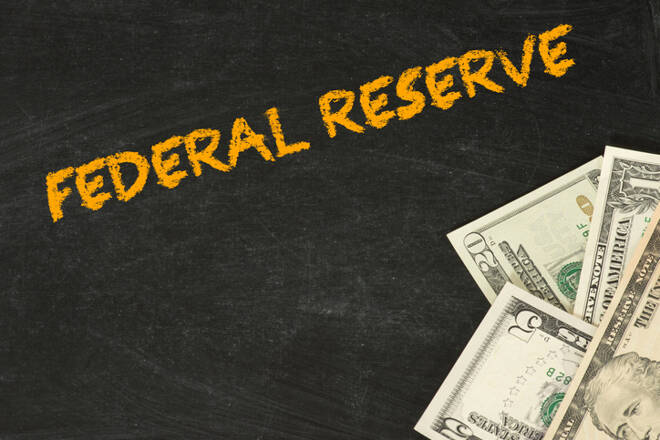Advertisement
Advertisement
Fed’s Bullard Sees Only One More 2019 Rate Cut
By:
“U.S. monetary policy cannot reasonably react to the day-to-day give-and-take of trade negotiations,” Bullard said Tuesday in a presentation to the National Economists Club in Washington. He further added that policymakers may need to get accustomed to greater trade uncertainty.
A week has passed since the Federal Reserve attempted to calm fears about a U.S. economic slowdown with a 25-basis point rate cut and Fed Chair Jerome Powell refrained from endorsing additional rate cuts in September and December. Initially, the moves worked with Treasury yields inching higher, the U.S. Dollar firming and stocks heading higher. However, the reaction was short-lived as President Trump’s announcement of additional tariffs on China and its retaliation rekindled the very fears the Fed was hoping to dampen.
At least that’s what the price action in the financial markets have been telling us this week, but Tuesday’s comments from Federal Reserve Bank of St. Louis President James Bullard indicate a different perspective.
Although this week’s plunge in Treasury yields indicates investors think the Fed has to do more to “save” the economy from the impact of a global economic slowdown, Bullard thinks policymakers have already taken steps to account for trade-war uncertainty and he currently forecasts one more interest rate cut this year. So just like the May-June period when the markets were telegraphing a Fed rate cut in July, it seems we’re back to the market dictating what the Fed should do with rates the rest of the year.
“U.S. monetary policy cannot reasonably react to the day-to-day give-and-take of trade negotiations,” Bullard said Tuesday in a presentation to the National Economists Club in Washington.
“We will have to see how the data rolls in between now and the meeting,” Bullard told reporters after his speech. “Sitting here today” he added, his outlook has not “changed dramatically from June” when he penciled in half a percentage point of easing by year-end.
Remember that Bullard dissented in June in favor of a 25-basis point rate cut, which the Federal Open Market Committee delivered on July 31. His decision at that time showed he was a little ahead of his colleagues. However, yesterday’s reluctance to signal the need of an additional rate cut in September combined with Fed Chair Jerome Powell’s less-dovish remarks last week suggests he is back on the same page with other central bank members in hesitating to endorse another cut at the next meeting.
“I have been one of the more dovish members of the committee, but you certainly can point to relatively strong GDP growth, relatively strong labor markets,” he said. “There is a case to be made, I think, for doing less, and that is where the push and pull is on the committee.”
Bullard also added he would “like to do more” to get inflation and inflation expectations higher.
The St. Louis Fed president also said the FOMC has already adjusted policy significantly this year in anticipation of slowing growth and trade uncertainty.
“While additional policy action may be desirable, the long and variable lags in the effects of monetary policy suggest that the effects of previous actions are only now beginning to impact macroeconomic outcomes,” Bullard said in his presentation.
He further added that policymakers may need to get accustomed to greater trade uncertainty.
“I do not expect this uncertainty to dissipate in the quarters and years ahead,” he said, adding this likely chilling business investment and feeding into slower global growth.
While Bullard seemed to be indicating that Fed policymakers need to see how the data plays out before making a decision to cut again in September, some of his comments suggest a “hope for the best, but prepare for the worst” attitude.
For example, he said, growth this year has been expected to slow from 2.5% in 2018. However, Bullard added, “a key risk has been that global trade uncertainties may cause this slowing to be sharper-than-anticipated.”
He also added, a more meaningful inversion of the yield curve continues to pose a threat, noting that such a phenomenon “has tended to predict the onset of recession in the U.S. during the postwar era.”
About the Author
James Hyerczykauthor
James Hyerczyk is a U.S. based seasoned technical analyst and educator with over 40 years of experience in market analysis and trading, specializing in chart patterns and price movement. He is the author of two books on technical analysis and has a background in both futures and stock markets.
Advertisement
